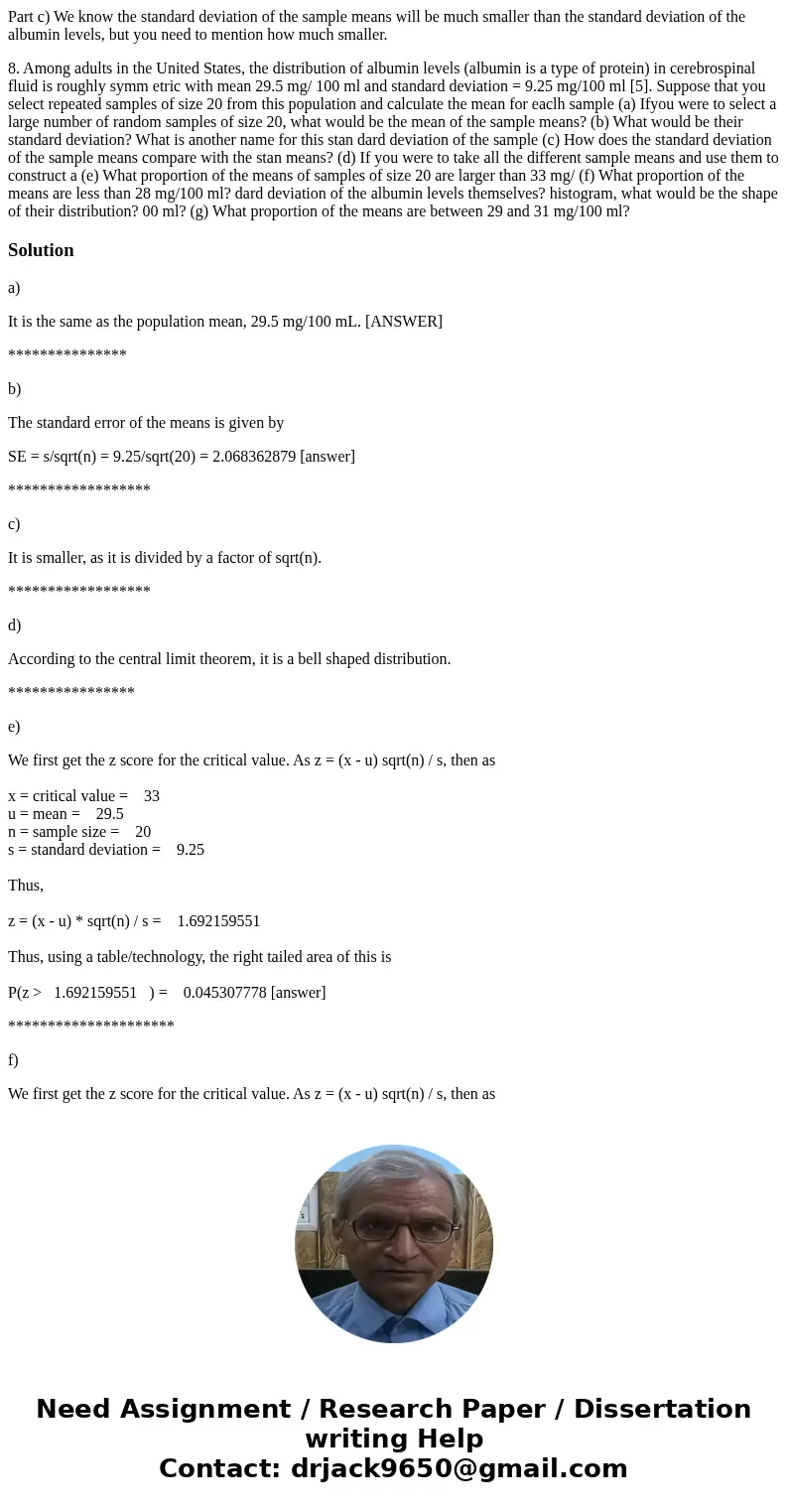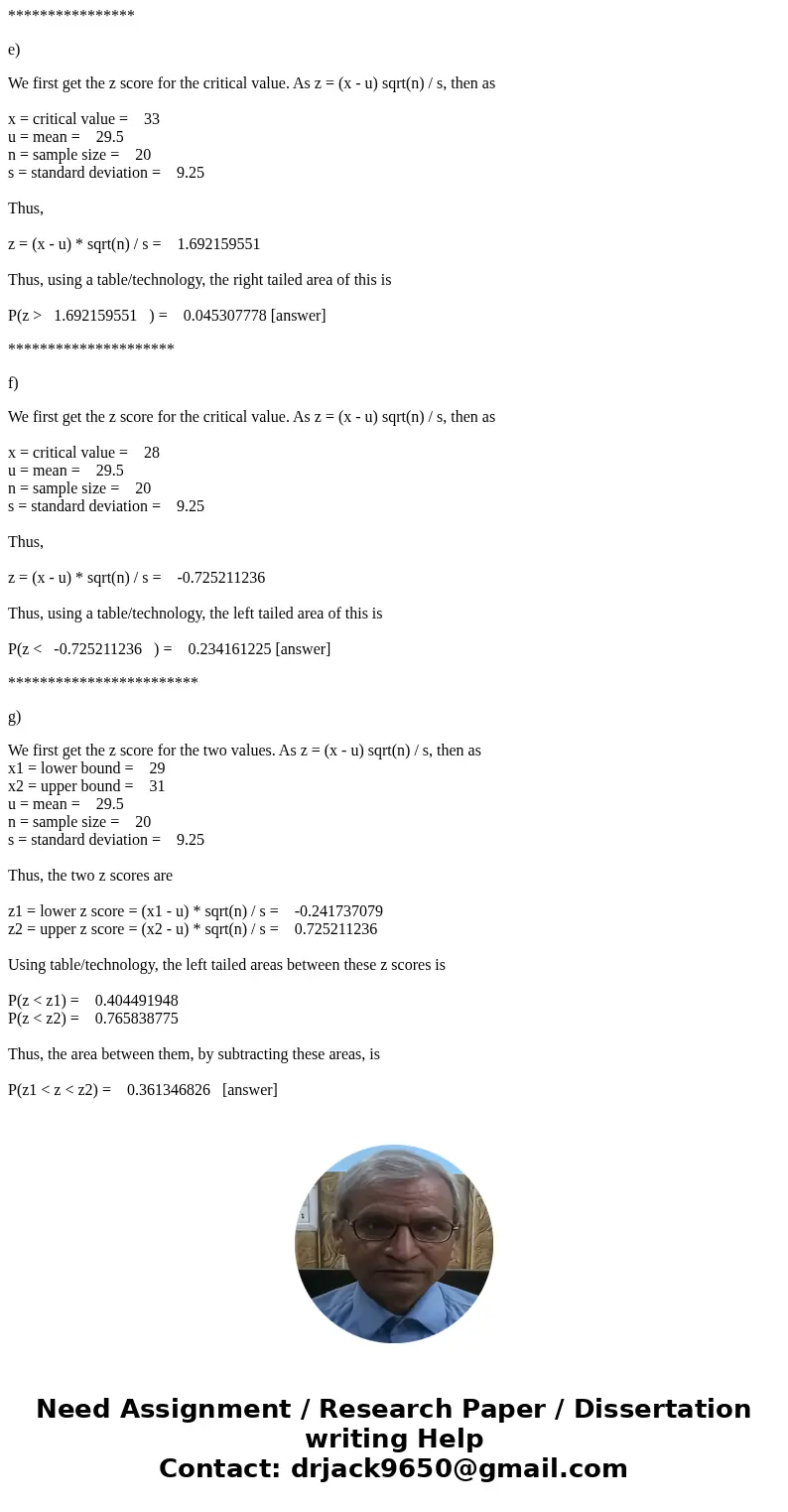Part c We know the standard deviation of the sample means wi
Part c) We know the standard deviation of the sample means will be much smaller than the standard deviation of the albumin levels, but you need to mention how much smaller.
8. Among adults in the United States, the distribution of albumin levels (albumin is a type of protein) in cerebrospinal fluid is roughly symm etric with mean 29.5 mg/ 100 ml and standard deviation = 9.25 mg/100 ml [5]. Suppose that you select repeated samples of size 20 from this population and calculate the mean for eaclh sample (a) Ifyou were to select a large number of random samples of size 20, what would be the mean of the sample means? (b) What would be their standard deviation? What is another name for this stan dard deviation of the sample (c) How does the standard deviation of the sample means compare with the stan means? (d) If you were to take all the different sample means and use them to construct a (e) What proportion of the means of samples of size 20 are larger than 33 mg/ (f) What proportion of the means are less than 28 mg/100 ml? dard deviation of the albumin levels themselves? histogram, what would be the shape of their distribution? 00 ml? (g) What proportion of the means are between 29 and 31 mg/100 ml?Solution
a)
It is the same as the population mean, 29.5 mg/100 mL. [ANSWER]
***************
b)
The standard error of the means is given by
SE = s/sqrt(n) = 9.25/sqrt(20) = 2.068362879 [answer]
******************
c)
It is smaller, as it is divided by a factor of sqrt(n).
******************
d)
According to the central limit theorem, it is a bell shaped distribution.
****************
e)
We first get the z score for the critical value. As z = (x - u) sqrt(n) / s, then as
x = critical value = 33
u = mean = 29.5
n = sample size = 20
s = standard deviation = 9.25
Thus,
z = (x - u) * sqrt(n) / s = 1.692159551
Thus, using a table/technology, the right tailed area of this is
P(z > 1.692159551 ) = 0.045307778 [answer]
*********************
f)
We first get the z score for the critical value. As z = (x - u) sqrt(n) / s, then as
x = critical value = 28
u = mean = 29.5
n = sample size = 20
s = standard deviation = 9.25
Thus,
z = (x - u) * sqrt(n) / s = -0.725211236
Thus, using a table/technology, the left tailed area of this is
P(z < -0.725211236 ) = 0.234161225 [answer]
************************
g)
We first get the z score for the two values. As z = (x - u) sqrt(n) / s, then as
x1 = lower bound = 29
x2 = upper bound = 31
u = mean = 29.5
n = sample size = 20
s = standard deviation = 9.25
Thus, the two z scores are
z1 = lower z score = (x1 - u) * sqrt(n) / s = -0.241737079
z2 = upper z score = (x2 - u) * sqrt(n) / s = 0.725211236
Using table/technology, the left tailed areas between these z scores is
P(z < z1) = 0.404491948
P(z < z2) = 0.765838775
Thus, the area between them, by subtracting these areas, is
P(z1 < z < z2) = 0.361346826 [answer]


 Homework Sourse
Homework Sourse